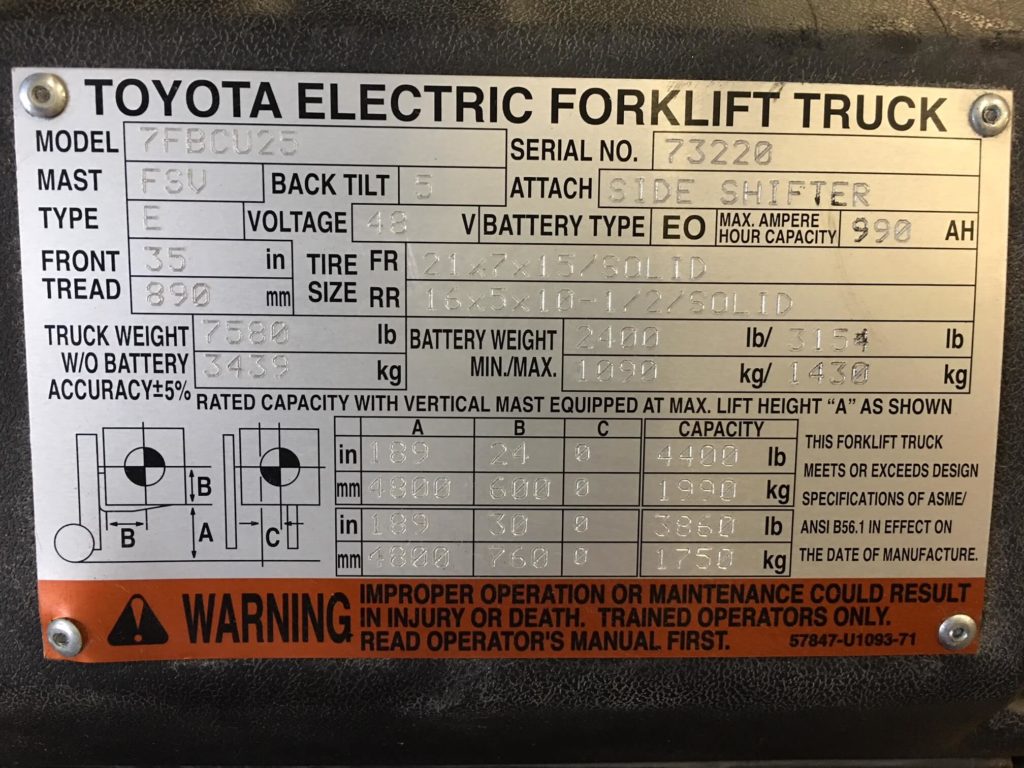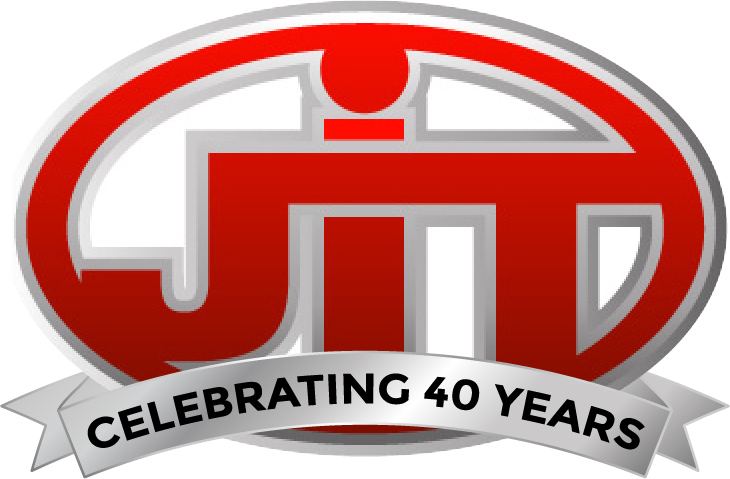How to Use a Forklift Nameplate to Find Out More about a Forklift

As a forklift buyer, you might find yourself in a position where the seller doesn’t know much about the forklift (this, of course, would NEVER happen at JIT Toyota-Lift.) Or perhaps you have a new job that uses a forklift, and no one knows much about it.
You can get some very important information from the nameplate that can help you learn about that forklift. Understanding this information will help you operate it safely and successfully.
Brand, Model, Type
The brand and model number can tell you a lot about the forklift. This information is listed first on a forklift nameplate. With this info, you can quickly do some research.
Next, look at the type. The type normally indicates the fuel source. For example, LP or LPS stands for Liquefied Petroleum gas and E stands for electric. Looking at the truck will help determine the fuel source and you can cross reference this with an abbreviation from the type section of the nameplate.
Attachments
The Attachments section denotes which attachments should be on the forklift. Attachments affect the maximum lift capacity of the forklift as some are heavier than others. Nameplates need to be changed if an attachment is added or if an attachment changes. If an attachment is listed correctly on a forklift nameplate, that nameplate will have corresponding capacities already calculated and listed. On the image pictured, the forklift uses a side shifter.
If you’re buying a used forklift without the attachments described on the nameplate, you can buy a new nameplate in an easy transaction after purchase. If you intend to add an attachment, or change the attachment, you are required to change the nameplate. OSHA requires this to be accurate. JIT Toyota-Lift offers this service for a nominal fee.
Mast
The Mast is slightly more difficult. For Toyota, FSV, FV, QFV, and V are all options. FSV is the most common and represents a 3 Stage Mast with Free Lift. FV, a 2 Stage Mast with Free Lift is also common. The type of mast helps you understand the maximum height a forklift can lift as well as the clearance needed at its lowest point. For more information about these types of mast, check out our post What are FSV Forklift Masts and FV Forklift Masts? We’ll explain V and QFV Masts as Well.
Maximum Capacity
Maximum Capacity changes based on many factors. A forklift can lift much more while lowered than it can when the mast is extended. The load center is another important variable. Larger loads have a load center further away from the truck, so it decreases the amount of weight the forklift can lift. Since a forklift’s maximum capacity is lowest when fully extended, a name plate will normally list the capacity at that height.
On the image pictured, A tells you that height. B references the load center. In this example, when the lift is fully extended at 189”, if the load center is 2’ or 24”, the truck can lift 4,400lbs. The other line tells us that if the load center changes to 30” the truck can lift 600lbs less at 3,860 capacity.
Conclusion
Forklift nameplates are designed to give you the critical information needed to operate the forklift safely. Armed with this knowledge, you can approach any forklift and be able to operate it successfully.
